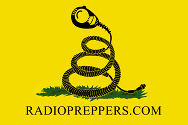Is it just me? It seems almost daily that on the 2 big name ham radio sites, the most bitter, mean spirited and generally obnoxious postings are made as a matter of course. One ham posts about ham radio being useful in this terrible monsoon damage in northern India. Straight away, some son of a pig has to post something about call centers from India (which I like BTW - polite people who speak English are rare) . 8,000 dead, 66,000 missing and entire villages including their subsistence farms, literally wiped off the face of the Earth and these are the comments made by the 'hobby' guys!? May they personally come to know the terror about which they make jokes.
It does not matter if the topic is about QRP, EMCOMM, antennas or almost any topic, these self-propelled-rectums are blethering away, spilling filth, trying to troll. I could go on, but why?
Interestingly enough, in face-to-face conversations at Dayton or the occasional ham fest, I rarely find this sort of behavior - in fact it's been zero. Perhaps the fact that I'm 6'5" and able to "correct" such poor behavior on the spot might have something to do with it. It's not that I have a bad temper - I do not. It's the cowardice of sniping from behind a keyboard or radio jamming on well established nets is seen as 'safe' because of being out of reach. Any willingness to convert this bad behavior into actual, physical WORK face-to-face is rare indeed - at least in ham circles.
>>> This is the prime reason that I am grateful for THIS radio forum. People here are more focused on exchanging ideas to make things better, helping others out with solutions, and trying new ways and methods - like Gil's magnetic loop experiments, which I enjoyed assisting in a tiny way as a distant receiving station. The occasional troll, SPAMmer and/or anti-social malcontent is rapidly show the door. We have a collection of raw beginners , old hands and just about anything in between and on a variety of topics, not ONLY radio. There is an increasing move to get on the air from outside of the home, even if it's only a short walk from the car to a park bench. The camping skeds have been AWESOME! That's always enjoyable and SHARED right here on the forum. Now, I would NOT go so far as to publicly declare that none of us are CERTIFIABLY NUTS, but at least we all play well together.
Gil has run a good forum for what - about a year now? Glad you're all here.
Now - GET BACK TO WORK!
>de RadioRay ..._ ._
It does not matter if the topic is about QRP, EMCOMM, antennas or almost any topic, these self-propelled-rectums are blethering away, spilling filth, trying to troll. I could go on, but why?
Interestingly enough, in face-to-face conversations at Dayton or the occasional ham fest, I rarely find this sort of behavior - in fact it's been zero. Perhaps the fact that I'm 6'5" and able to "correct" such poor behavior on the spot might have something to do with it. It's not that I have a bad temper - I do not. It's the cowardice of sniping from behind a keyboard or radio jamming on well established nets is seen as 'safe' because of being out of reach. Any willingness to convert this bad behavior into actual, physical WORK face-to-face is rare indeed - at least in ham circles.
>>> This is the prime reason that I am grateful for THIS radio forum. People here are more focused on exchanging ideas to make things better, helping others out with solutions, and trying new ways and methods - like Gil's magnetic loop experiments, which I enjoyed assisting in a tiny way as a distant receiving station. The occasional troll, SPAMmer and/or anti-social malcontent is rapidly show the door. We have a collection of raw beginners , old hands and just about anything in between and on a variety of topics, not ONLY radio. There is an increasing move to get on the air from outside of the home, even if it's only a short walk from the car to a park bench. The camping skeds have been AWESOME! That's always enjoyable and SHARED right here on the forum. Now, I would NOT go so far as to publicly declare that none of us are CERTIFIABLY NUTS, but at least we all play well together.
Gil has run a good forum for what - about a year now? Glad you're all here.
Now - GET BACK TO WORK!
>de RadioRay ..._ ._



